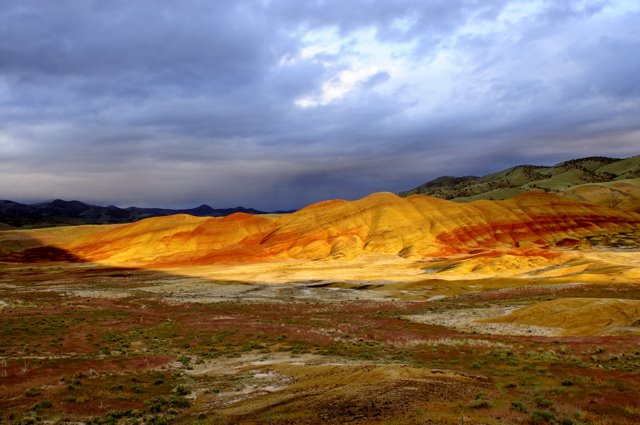I had the opportunity to try my Nikon D-300

at a football game under the field lights the other night. My initial camera settings of ISO 200 with the camera set to programmable mode did not do well. After trying a few different WB settings I decided it should be left at Auto since I wanted to work only one feature at a time until I understood what effect my setting changes had. I haven't had the opportunity to shoot in these lighting conditions before so I enjoyed the challenge. At the initial settings my camera was using the shutter speed was very slow, near 1/13 sec at F/5.6. All the images were blurred and even panning was difficult. Mostly because I didn't have a monopod or tripod with me.

Eventually I decided to bump the ISO setting up all the way. The top photo here was with an ISO of 200, the bottom with the ISO set to the equivalent of 6400. At this setting my shutter speed increased to 1/80 sec at F/5.3 for this image captured in the darker parts of the field. This allowed me to shoot multiple images and freeze most, but not all the action giving the images a sense of motion. I also changed my camera from it's Vivid setting to Standard thinking it might help speed things up. After viewing these images I think I should have left it at Vivid.
 at a football game under the field lights the other night. My initial camera settings of ISO 200 with the camera set to programmable mode did not do well. After trying a few different WB settings I decided it should be left at Auto since I wanted to work only one feature at a time until I understood what effect my setting changes had. I haven't had the opportunity to shoot in these lighting conditions before so I enjoyed the challenge. At the initial settings my camera was using the shutter speed was very slow, near 1/13 sec at F/5.6. All the images were blurred and even panning was difficult. Mostly because I didn't have a monopod or tripod with me.
at a football game under the field lights the other night. My initial camera settings of ISO 200 with the camera set to programmable mode did not do well. After trying a few different WB settings I decided it should be left at Auto since I wanted to work only one feature at a time until I understood what effect my setting changes had. I haven't had the opportunity to shoot in these lighting conditions before so I enjoyed the challenge. At the initial settings my camera was using the shutter speed was very slow, near 1/13 sec at F/5.6. All the images were blurred and even panning was difficult. Mostly because I didn't have a monopod or tripod with me. Eventually I decided to bump the ISO setting up all the way. The top photo here was with an ISO of 200, the bottom with the ISO set to the equivalent of 6400. At this setting my shutter speed increased to 1/80 sec at F/5.3 for this image captured in the darker parts of the field. This allowed me to shoot multiple images and freeze most, but not all the action giving the images a sense of motion. I also changed my camera from it's Vivid setting to Standard thinking it might help speed things up. After viewing these images I think I should have left it at Vivid.
Eventually I decided to bump the ISO setting up all the way. The top photo here was with an ISO of 200, the bottom with the ISO set to the equivalent of 6400. At this setting my shutter speed increased to 1/80 sec at F/5.3 for this image captured in the darker parts of the field. This allowed me to shoot multiple images and freeze most, but not all the action giving the images a sense of motion. I also changed my camera from it's Vivid setting to Standard thinking it might help speed things up. After viewing these images I think I should have left it at Vivid.

No comments:
Post a Comment